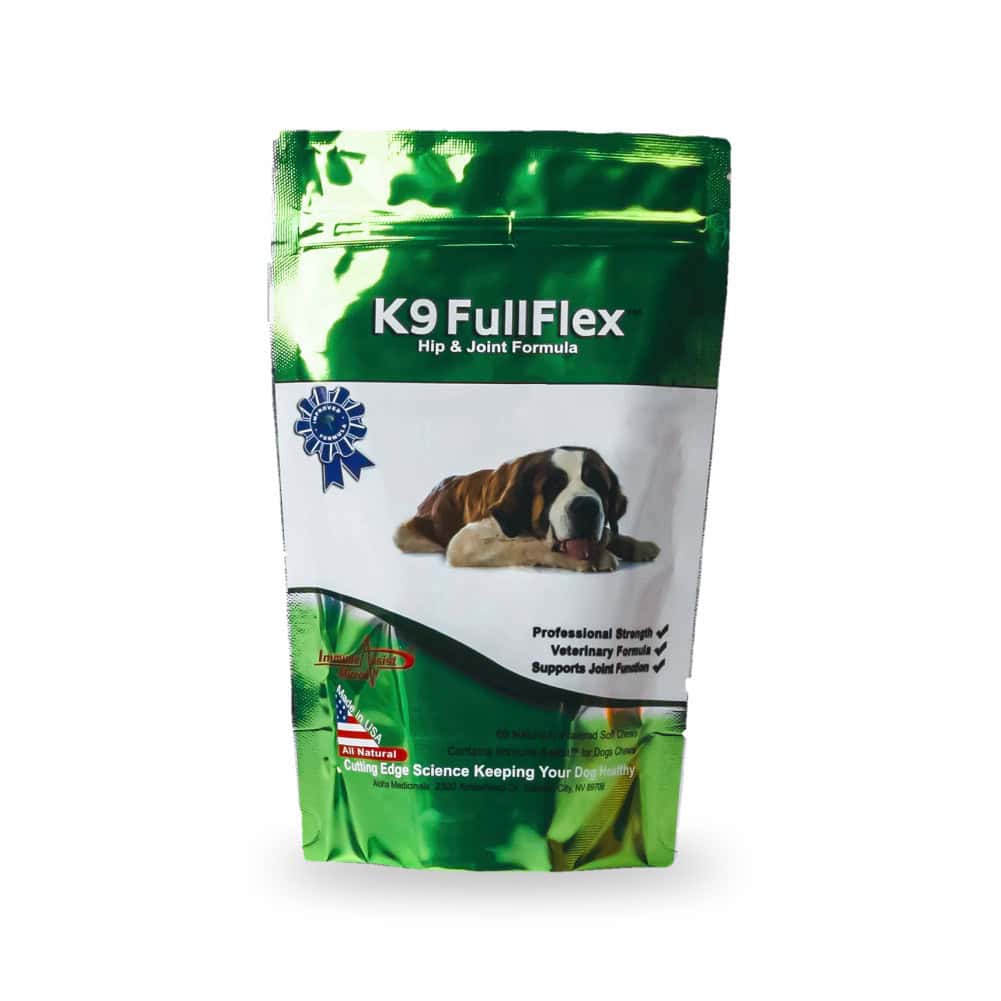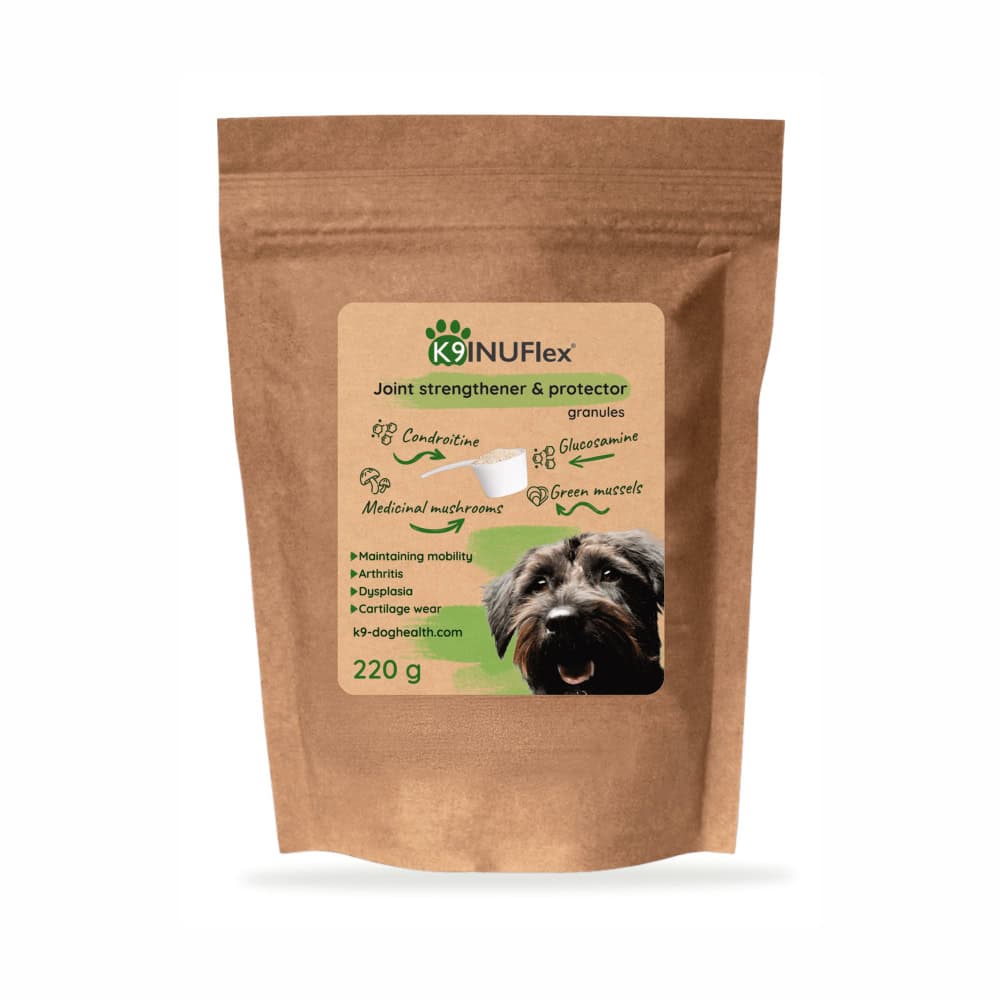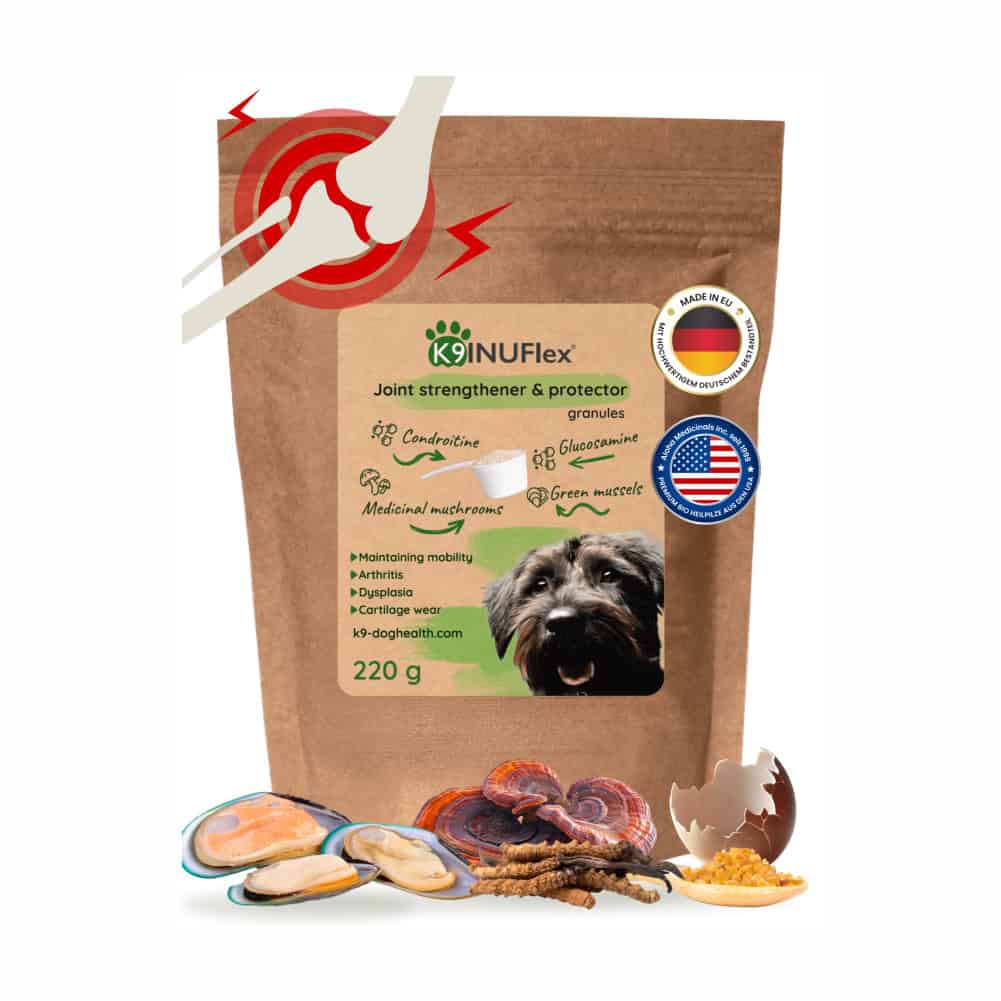Dog joint supplement for comfort, movement, and joy
Does your dog struggle to get up or hesitate before jumping into the car or chasing a ball? The issue may not be age - it’s often joint discomfort. A well-formulated dog joint supplement can help restore ease of movement and daily joy. These supplements not only relieve pain but also support long-term joint health and mobility - for both playful puppies and senior companions.Why start joint support early?
As dogs age – especially medium and large breeds - their joints lose elasticity, cartilage wears down, and inflammation develops. But you don’t have to wait for visible signs. Choosing a high-quality dog joint supplement at the first signs of stiffness can help protect mobility and comfort for years to come.Premium ingredients that make a difference
Our joint supplements combine trusted ingredients for real results:- Glucosamine and chondroitin - help maintain cartilage and elasticity
- Green lipped mussel and hyaluronic acid - support joint cushioning and fluid balance
- Boswellia serrata - a natural anti-inflammatory for added comfort
- ESM (eggshell membrane) - promotes the repair of tendons and cartilage
- Immune Assist™ mushroom blend and colostrum - support immunity and recovery
Soft chews or powder - no pills needed
Our dog joint supplement come as mixable powder or tasty chews - easy to use daily and loved by dogs. No pills - just tasty chews or mixable powder. Ideal for sensitive dogs, picky eaters, or anyone needing easy support.Who benefits most from joint support?
- Senior dogs showing signs of stiffness or slower movement
- Active or working dogs with higher joint stress
- Young dogs for early protection and prevention
- Dogs recovering from injury or joint surgery
Why choose K9 INU® joint supplements?
- Vet-recommended joint support you can trust
- Made with glucosamine, green lipped mussel, and ESM
- Backed by science and trusted by dog lovers worldwide
- Fast shipping and helpful support before and after your order
Showing all 2 results
-

K9 FullFlex™
- Comprehensive support for joints, cartilage, and ligaments.
- Natural inflammation relief and improved mobility – at any age.
- Helps prevent dysplasia and reduces pain.
- Formulated with medicinal mushrooms, green-lipped mussel, SOD, and ESM.
€57,00 -


K9 INUFlex®
- Restores natural movement – visible results in 10 days
- Relieves joint pain and supports cartilage regeneration
- Natural anti-inflammatory – with mussel & Boswellia
- Strengthens joints and ligaments – safe for daily use
€41,40